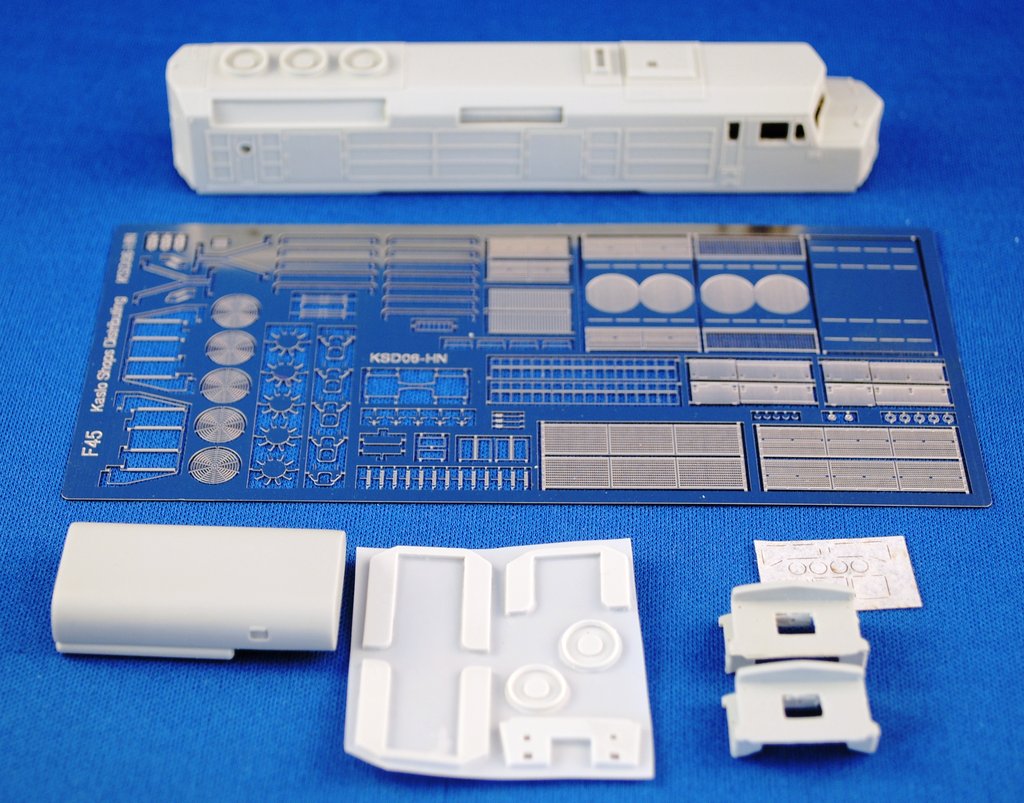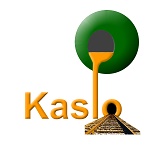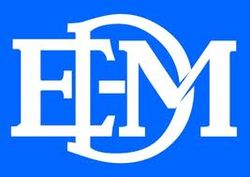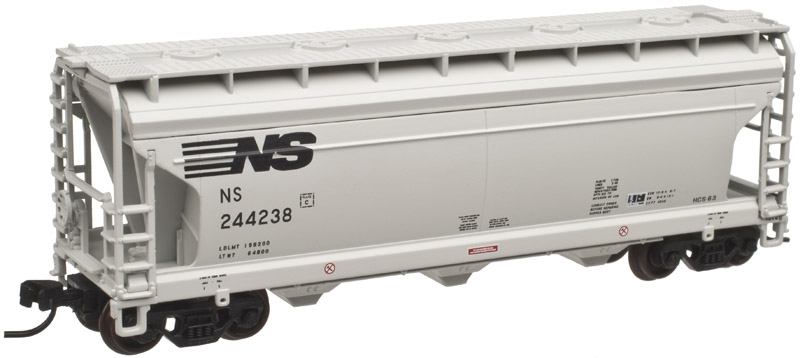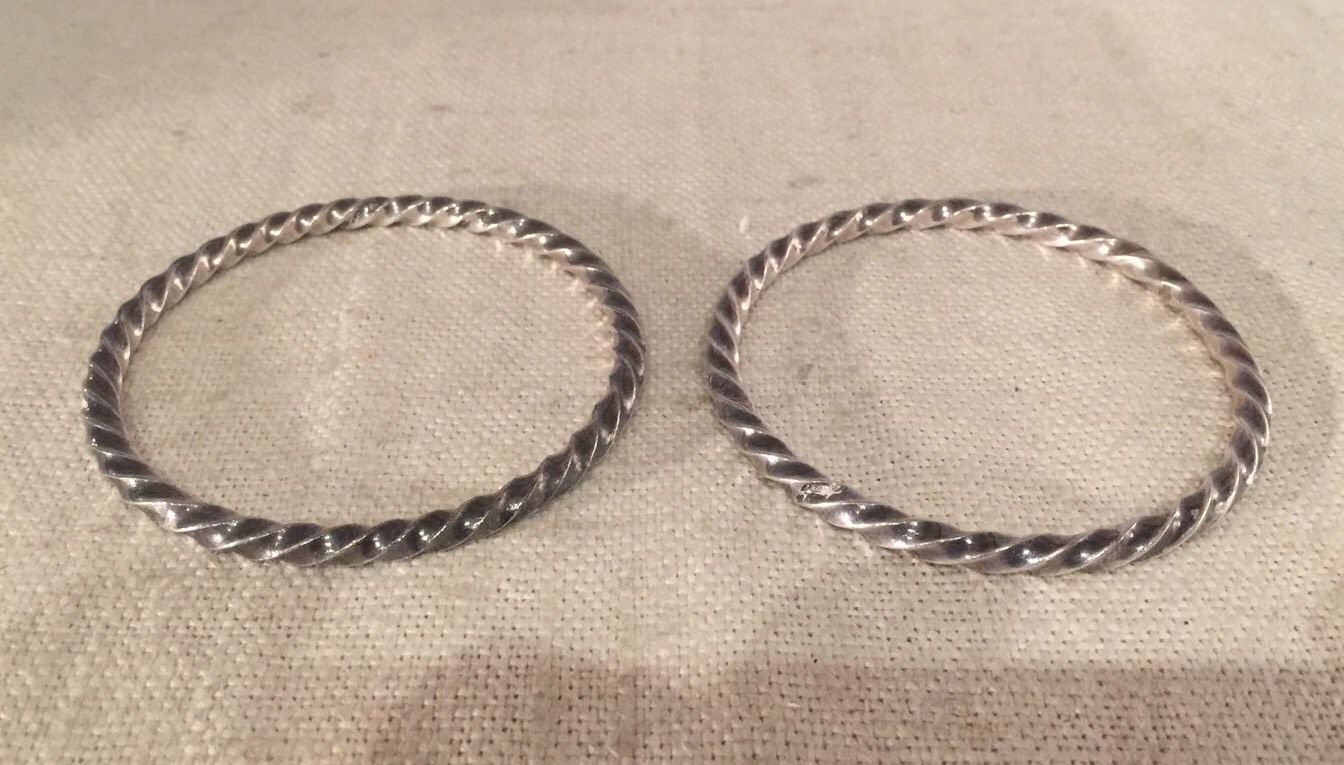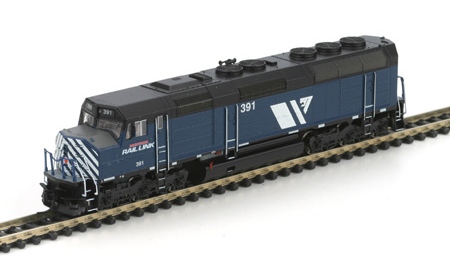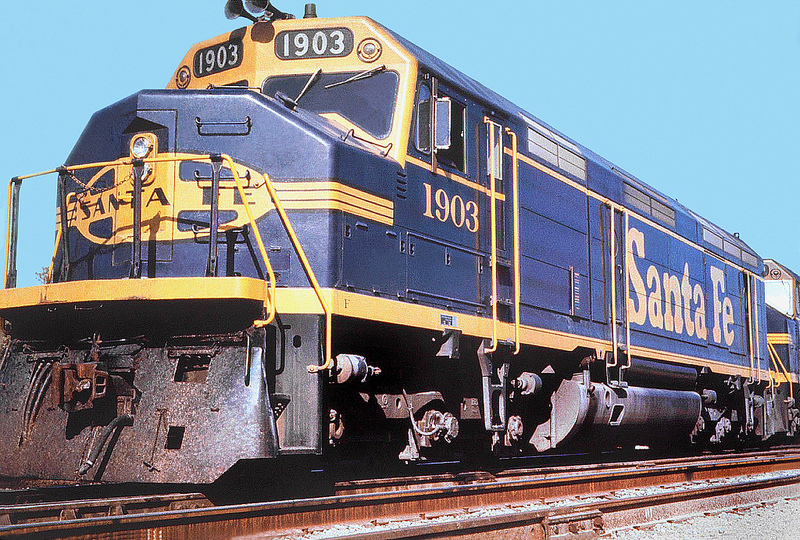Specific Item Information: EMD - F45 Locomotive Shell
Model Information: Locomotive body shell kits. These kits can be used with mechanisms such as: ????
Prototype History: By the early 1960's the Electro-Motive Division (EMD) was at a big disadvantage. Their 567 engine, in use for over 20 years, had reached it's peak at 2.500 horsepower in a turbocharged 16-cylinder version. EMD released a new 645 engine in 1966. The most powerful locomotive using this series of engine was the SD45, powered by a 20-cylinder turbocharged 645E engine producing 3600 horsepower. Orders from railroads all over the country, especially western roads, poured in. Great Northern received the first one off the production line and Santa Fe took delivery of a 90-unit order the first year.
At the same time Santa Fe was looking to replace it's aging fleet of passenger locomotives. They wanted something more stylish than a freight hood unit with a steam generator for thier famous Super Chief train. EMD had already extended the SD45 frame and added a steam generator to the rear creating the SDP45. They responded to Santa Fe's request by adding a cowl body to the SDP45 thus creating the FP45.
Santa Fe took delivery of the first nine FP45's in December of 1967. Numbered 100-108, they were painted in the red and silver warbonnet passenger scheme with black Roman-style Santa Fe lettering on the sides. The cowl offered a cleaner engine compartment and internal walkways, both of which would lead to production of the F45, a regular SD45 with the cowl. Santa Fe acquired forty F45's in 1968, numbered 1900-1939 and delivered in the blue and yellow 'pinstripe' scheme. The second twenty were equipped with steam lines for use on passenger trains. When Amtrak took over passenger service the FP45's went into the freight pool, receiving blue and yellow paint. The pinstripe paint scheme gave way to the blue and yellow warbonnet scheme by 1980. In the early 80's all 40 FP45's and 8 F45's were rebuilt at the San Bernadino shops. During the failed merger with Southern Pacific seven FP45's and twenty F45's received red and yellow 'Kodachrome' paint. On July 4th, 1989, FP45's 5992 and 5998 were released from the San Bernadino shops as numbers 101 and 102 in the newly revived red and silver 'Super Fleet' scheme with a large Santa Fe on the sides. Two F45's were wrecked and scrapped and one was sold to Wisconsin Central while the remaining six were donated to various railroad museums. Six F45's were sold to Wisconsin Central and the remaining units went to Morrison-Knudsen as lease units with one being assigned and painted for Utah Railway.
Milwaukee Road was the other railroad that bought FP45's. Arriving in late 1968 for Hiawatha passenger service, they wore the UP yellow and gray scheme and were numbered 1-5. They differed from other F45's and FP45's as they did not have dynamic brakes installed. Even before Amtrak arrived these locomotives were re-assigned to freight service between Chicago and the Twin Cities.
Great Northern acquired fourteen F45's, numbered 427-440 and painted in the Big Sky Blue scheme, in 1969. The internal walkways were important to the GN given the winter weather on the line between the Twin Cities and Seattle. Crews no longer had to worry about ice and snow covered walkways like on their hood units. GN planned to run all of their main line freights with a F45 on the point. GN ordered an additional 12 units, which were delivered as Burlington Northern 6614-6625 in 1970. BN continued the F45 purchase in 1971 with 20 additional units numbered 6626-6645. The 46 F45's were regular power on the Chicago to West Coast trains over the former GN lines. Three of the original GN units were leased to Utah Railway for five years after being retired by BN. Two other units were sold to Susquehanna and three went first to Trancisco, then to Wisconsin and Southern, and finally to Montana Rail Link. One of the two Susquehanna units was re-sold to MRL in 1993.
EMD F45:
- Full data sheet on The Diesel Workshop.
- Read more on Wikipedia.
- Read more on American-Rails.com
At the same time Santa Fe was looking to replace it's aging fleet of passenger locomotives. They wanted something more stylish than a freight hood unit with a steam generator for thier famous Super Chief train. EMD had already extended the SD45 frame and added a steam generator to the rear creating the SDP45. They responded to Santa Fe's request by adding a cowl body to the SDP45 thus creating the FP45.
Santa Fe took delivery of the first nine FP45's in December of 1967. Numbered 100-108, they were painted in the red and silver warbonnet passenger scheme with black Roman-style Santa Fe lettering on the sides. The cowl offered a cleaner engine compartment and internal walkways, both of which would lead to production of the F45, a regular SD45 with the cowl. Santa Fe acquired forty F45's in 1968, numbered 1900-1939 and delivered in the blue and yellow 'pinstripe' scheme. The second twenty were equipped with steam lines for use on passenger trains. When Amtrak took over passenger service the FP45's went into the freight pool, receiving blue and yellow paint. The pinstripe paint scheme gave way to the blue and yellow warbonnet scheme by 1980. In the early 80's all 40 FP45's and 8 F45's were rebuilt at the San Bernadino shops. During the failed merger with Southern Pacific seven FP45's and twenty F45's received red and yellow 'Kodachrome' paint. On July 4th, 1989, FP45's 5992 and 5998 were released from the San Bernadino shops as numbers 101 and 102 in the newly revived red and silver 'Super Fleet' scheme with a large Santa Fe on the sides. Two F45's were wrecked and scrapped and one was sold to Wisconsin Central while the remaining six were donated to various railroad museums. Six F45's were sold to Wisconsin Central and the remaining units went to Morrison-Knudsen as lease units with one being assigned and painted for Utah Railway.
Milwaukee Road was the other railroad that bought FP45's. Arriving in late 1968 for Hiawatha passenger service, they wore the UP yellow and gray scheme and were numbered 1-5. They differed from other F45's and FP45's as they did not have dynamic brakes installed. Even before Amtrak arrived these locomotives were re-assigned to freight service between Chicago and the Twin Cities.
Great Northern acquired fourteen F45's, numbered 427-440 and painted in the Big Sky Blue scheme, in 1969. The internal walkways were important to the GN given the winter weather on the line between the Twin Cities and Seattle. Crews no longer had to worry about ice and snow covered walkways like on their hood units. GN planned to run all of their main line freights with a F45 on the point. GN ordered an additional 12 units, which were delivered as Burlington Northern 6614-6625 in 1970. BN continued the F45 purchase in 1971 with 20 additional units numbered 6626-6645. The 46 F45's were regular power on the Chicago to West Coast trains over the former GN lines. Three of the original GN units were leased to Utah Railway for five years after being retired by BN. Two other units were sold to Susquehanna and three went first to Trancisco, then to Wisconsin and Southern, and finally to Montana Rail Link. One of the two Susquehanna units was re-sold to MRL in 1993.
EMD F45:
- Full data sheet on The Diesel Workshop.
- Read more on Wikipedia.
- Read more on American-Rails.com
Road Name History: 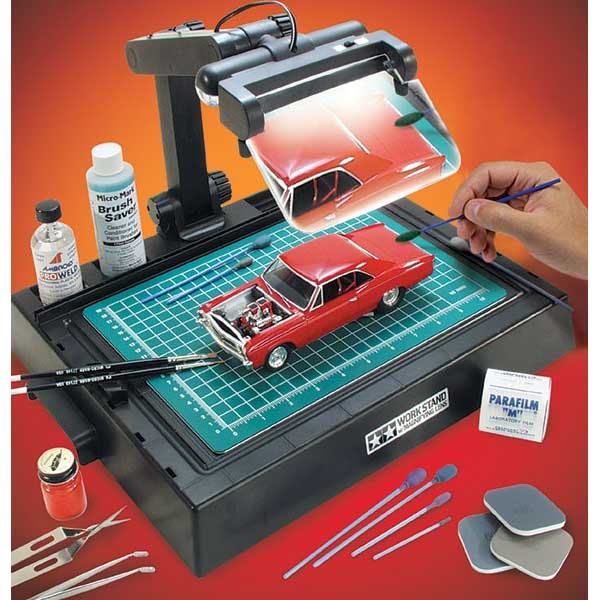 Although they may be molded in color, unpainted and unlettered, undecorated products are marketed to modelers who seek to custom decorate their models for private roads and/or road and/or company names that were not commercially produced by any of the major manufacturers.
Although they may be molded in color, unpainted and unlettered, undecorated products are marketed to modelers who seek to custom decorate their models for private roads and/or road and/or company names that were not commercially produced by any of the major manufacturers.
Undecorated models are frequently also unassembled or only partially assembled and required modelers to be comfortable with glue, paint and sometimes solder in order to prepare their models for display. Materials for these models can vary but often include plastic, pewter and resin. Models may or may not come with decals or other decorations such as plastic signage, railings and ladders to enhance the appearance of the final product.

Undecorated models are frequently also unassembled or only partially assembled and required modelers to be comfortable with glue, paint and sometimes solder in order to prepare their models for display. Materials for these models can vary but often include plastic, pewter and resin. Models may or may not come with decals or other decorations such as plastic signage, railings and ladders to enhance the appearance of the final product.
Brand/Importer Information: Kaslo Shops Distributing was formed in 1998 in an effort to supply the modelling community with top quality parts and kits.
We specialize in:
- Detail Parts
- Locomotive Resin Kits
- Cab Kits
We are always looking for new ideas and new projects - please contact us with any suggestions or requested kits!
We specialize in:
- Detail Parts
- Locomotive Resin Kits
- Cab Kits
We are always looking for new ideas and new projects - please contact us with any suggestions or requested kits!
Item created by: CNW400 on 2020-06-10 12:49:23
If you see errors or missing data in this entry, please feel free to log in and edit it. Anyone with a Gmail account can log in instantly.
If you see errors or missing data in this entry, please feel free to log in and edit it. Anyone with a Gmail account can log in instantly.


